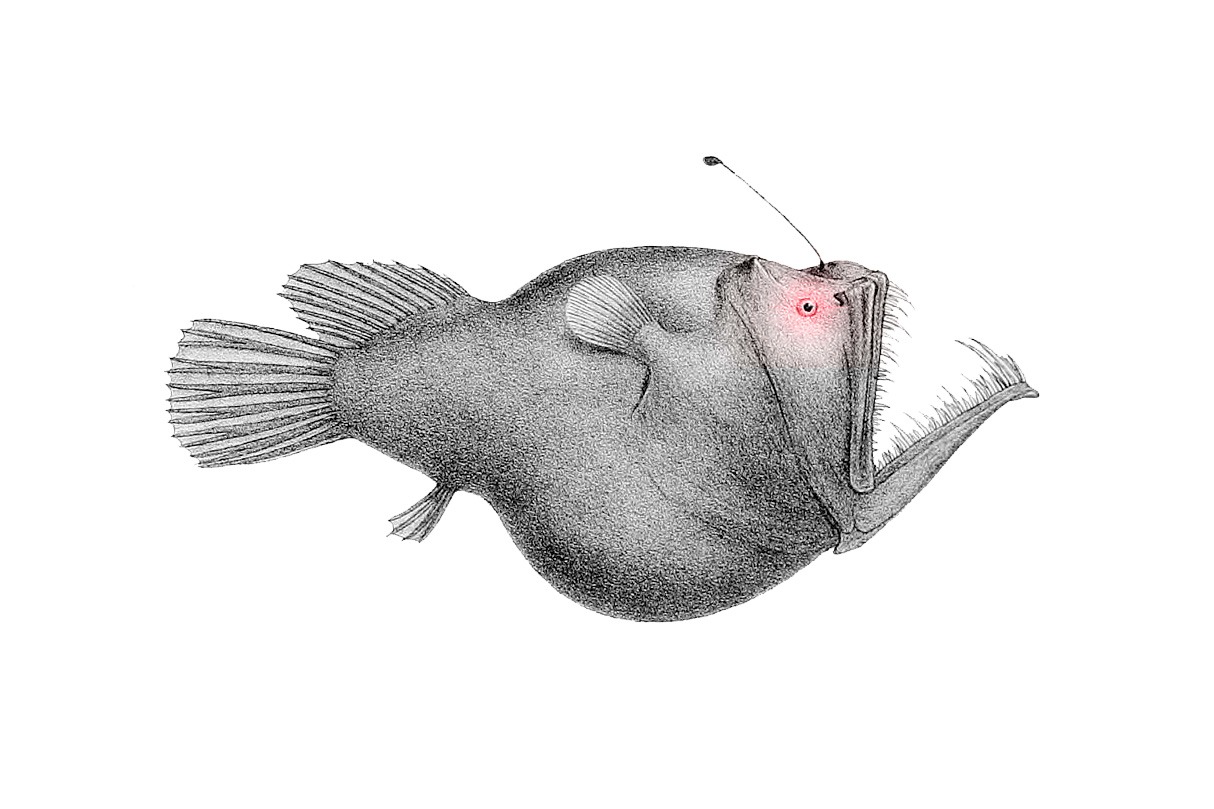LET’S TAKE TWO of today’s most popular entities in pop culture: Lady Gaga and Meow Wolf. Both are revolutionary. At first, it wasn’t Lady Gaga’s music that set her apart, but her image: Lady Gaga showed up to the scene dressed to jolt pop culture out of the comfortable mold it had settled into. Meow Wolf similarly called attention to itself when its creators set out to curate a work that would commission art from many under-appreciated artists, combining their pieces and ideas to create art that doubled as a new world you could visit. This was an original introduction to this realm, even for installation art. Meow Wolf did more than change the viewer’s perception of a space. It created an “ultra-installation” by asking visitors to become a part of the work in the form of a participant.
The two drastically different entities of both Lady Gaga and Meow Wolf have conceptually crossed paths in Lady Gaga’s Chromatica, which has brought together both the concepts of installation art and music. Chromatica is an album that goes beyond the participant’s ears and plunges its audience into a new kind of experience, much in the way that Meow Wolf submerges its viewers in a tangible and multi-dimensional world; although, Chromatica provides for an immaterial experience of this kind. The participants are left to find the tangibility in this new world via their own individual encounter with the album. But it is a likened engagement nonetheless because Chromatica adheres to the same primary concepts as does the “ultra-installation” of Meow Wolf’s capacity. Gaga is an “Alice” of our time and has sought to lead not just herself but also her audience into a new kind of “Wonderland” — one that’s both alternate reality and multi-dimensional.
I refer to this album’s audience as “participants,” as opposed to “listeners,” because Chromatica has transgressed the boundaries of sound to involve the integral human. It is an all-encompassing world-builder that carries its audience to uncharted territories. From the Burning Man-esque vibe that you get in “Stupid Love” to the unidentifiable location hosting the music video for “Rain on Me,” the participant feels like the omnipotent version of themselves that they are in their dreams. Participants reach this powerful state through the all-inclusive world of sound.
As such, Chromatica is the pocket-friendly Meow Wolf experience.
You get the whole visit in one back-to-back remote listen. Like most pop music, it’s cushioned with layer upon layer of repetitive sound. But, Chromatica has set itself apart with a sort of mindful (as opposed to mindless) escapism, and, not unlike Kazimir Malevich’s Black Square, it comes with a manifesto helping the participants navigate its realms. These qualities have armed the album with the ability to be experienced on varying levels depending on one’s degree of consciousness.
These levels correspond with three concepts similarly present in Meow Wolf:
- IMMERSION
- INTERACTION
- NARRATION
Here, I’ll take you through each of these elements and their contrasting applications in both the Meow Wolf and Chromatica experiences.

i. IMMERSION
In the Chromatica Interview with Zane Lowe, Zane asked Gaga what she would like listeners to get out of this album, and she answered that she wished to take them on a journey, and that Chromatica would allow her to open a creative portal to “the other realm.” Sound familiar? If you’ve already glanced at Meow Wolf’s “ABOUT” page to know what all the hype’s about, you likely read the headline: “What Does It Do?” — and the description underneath:
Meow Wolf creates immersive and interactive experiences that transport audiences of all ages into fantastic realms of story and exploration. This includes art installations, video and music production, and extended reality content.
This is where we begin to see the ideologies carried out by both the Haus of Gaga in Chromatica and the Meow Wolf Collective coincide.
Stepping into the Meow Wolf world is like stripping your senses of everything they’ve previously been taught. The newfound setting causes the senses to go through a process of “re-transference” and it becomes unclear whether you’re touching something or looking at it. It’s otherworldly. Meow Wolf welcomes anyone and everyone into a realm akin to the up-until-now intangible “Wonderland” that we’ve been peeking under rocks to find. The work goes beyond installation and transcends how its audience views art. This is not your mundane “look-and-process” type of art. Meow Wolf is an inundation of the senses, occupying every sensuously active reactor in the participant’s body.
This kind of juxtaposed maximalism already exists in Gaga’s stylistic approaches to both her personal image and work. She adorns herself to become walking pop art and is a sensationally emotive performer. In the past, her (pop) music also mostly followed in this path. Much of it adhered to pop music’s conceptual void and centered on excess and a predominantly stagy dynamic. Some of her earlier albums, namely The Fame and ARTPOP, were all about this. Then with Joanne, Gaga heeded to deeper emotional saturation but was without the enlarged theatrical element that, up until then, had been her trademark.
Chromatica marries all of these elements, returning the excessive richness of her imagery and sound, but this time with the infusion of the star’s own vulnerability. Bringing back the amplified artifice of ARTPOP and melding it with Joanne’s personal nature is what ultimately makes Chromatica so whole. Like Meow Wolf, it enamors the senses with larger-than-life theatrics, color, mindfulness, and limitlessly explorative interpretations, albeit with a more vulnerable humanism.
Like opening a refrigerator door in the Meow Wolf experience can take you from the kitchen to transmundane. Chromatica begins with “Chromatica I” as you “walk” through the tunnel to its first song, which is appropriately titled “Alice.” Gaga sings:
My name isn’t Alice
But I’ll keep looking for Wonderland
Take me home
Take me to Wonderland
Here it is, and now you don’t have to go all the way to Santa Fe to fall into the hole.

To Zane Lowe, Gaga admitted she was hesitant to release the album during this “super virus,” but she could not have timed this release any better. Now we are at our most vulnerable. We’ve been separated from one another and confined to our minds, away from reality, and as we hover in a state of indefinite liminality, we are prepared for new. And so came the release of Chromatica. It is, like Elton John’s contribution to the album, a “Sine from Above.” With a listening device and a floor to dance on, Chromatica’s eager participants can step forward into a new realm. Whether intended or not, Chromatica is innately more than pop music. At the least, Gaga clearly intended to tell her truth throughout this album by bringing forth her issues and insecurities into the song lyrics. But the beauty in this is that Chromatica does not stop at telling only one person’s truth but rather blazes the trail for its participants to radically accept and work through their own muddled realities.
Gaga expressed that Chromatica is a world she has built for “kindness punks everywhere.” This statement invites anyone and everyone who feels they might need to cross the bounds of their own tangible reality. After visiting Meow Wolf and crawling through a chimney that led to a completely remote location, I thought to myself, “Is this what it’s like to lose your mind?” When I listened to Chromatica for the first time, the same question returned. But in both scenarios, I experienced a sense of neutrality — by this, I mean that I was rediscovering. I had no expectations and goals other than to understand where I was and how I was operating at that moment. The past and future were not on my mind but solely the present. As humans, when faced with the absolute unknown, what do we do? So long as we’re still self-aware, we rewire to adapt to our new present. Sudden displacement such as this causes a cognitive and full-body cease-fire. The need to halt and reintegrate is a systematic result of the immersive turmoil brought forth by works like Chromatica and Meow Wolf.
Thus, this feeling takes Chromatica beyond the spectrum of pop and drags it into installation territory with tinges of Suprematism. The Suprematist art movement was one of the most rebellious movements to sweep the art world. It simplified artwork to elementary forms, opening art to a supremacy of pure feeling or perception. Chromatica operates similarly by ingesting the participant with “Alice” and guiding them down a path of familiar unfamiliarity. It urges the participant to “feel” from within, as opposed to observing from the outside, much like the 20th century’s Black Square that shocked the definition of art and coerced its viewers to become participants. It is the darkness, the madness, and the narratives everyone faces on the inside. And it draws the participant in to meet all of that in a modern and exciting way.
Chromatica leads its participants from its kingdoms of turbulence to its realms of positivity and back. The participant can stay in this never-ending loop for as long as they need or choose. Like Lady Gaga noted about Chromatica to Zane Lowe, “It’s like if time and linear structure don’t matter. They don’t exist.”

ii. INTERACTION
Interaction is an intrinsic function of virtually all artwork, no matter its form. Direct communication with a world that is manifested by a work of art is more difficult to attain. Direct interaction is something you come across in installation art or maximalist works because these works encompass their participants as a result of sheer scale or spatial modification. When a participant enters a Meow Wolf exhibit, they have no choice but to interact with the surroundings they’ve just joined. They are now in it and subsequently a part of it. Even if they wanted to leave, they’d have to progress by opening doors, a central component of the Meow Wolf experience, to exit the exhibit. Such creations force interaction from those who are curious enough to explore them.
Chromatica is one such creation. The album’s world-building, like the literal construction of Meow Wolf’s worlds, is another point at which Chromatica departs the confines offered by the term “pop” and takes on qualities seen in both suprematism and maximalism, movements that have both heavily influenced installation art.
It’s easy to identify how an audience is interacting in the context of Meow Wolf. The interactions that occur between participant and the worlds of Meow Wolf are blunt and straightforward: doors are opened and closed; the art is physically touched, entered, exited, and played with. So how does a participant interact with something as immaterial as music? They dance, for one, and they are gifted the liberty to enter a new world that shapes and is shaped by their realities and mindfulness.
What characterizes interaction is something I’ve had to ponder. It is unclear whether or not you can define actions such as dancing or cognitive reassessment of oneself as interactions when they’re disembodied from the art itself. Characteristics of interaction are especially unclear when we find ourselves confined, tethered to nothing but our homes and our minds. But if, by definition, an interaction is something that is marked by some kind of mutual or reciprocal action or influence, then there is undoubtedly interaction between Chromatica and its participants.
Lady Gaga fans long for the day that they can celebrate the sound of Chromatica together in clubs and events across the world. But now they’ve been prompted to adapt and find new ways to foster interaction with music. This was the perfect way to put the “Pocket-Friendly Meow Wolf” theory to test. Despite the boundaries that now guide day-to-day operations across the globe, there has been a phenomenal amount of creative interaction. And it seems that Chromatica, an album that was created in majority using computers, was destined to be experienced in a time where the “virtual age” now refers to an all-new way of life and gathering.

The Zane Lowe-Gaga interview touched a lot on this notion of “connecting from afar.” He asked her about her vision for Chromatica, and Gaga explained it in these abstract terms: “This is not dystopian, and it’s not utopian. This is just how I make sense of things [in Chromatica], and I wish that to be a message that I can share with other people.”
This statement goes to underline the concept that, like Meow Wolf, Chromatica serves as an in-between or portal to this new world where the participants can observe their emotions and work through them in a way that is neither immaterial nor concretely corrupt by what’s already familiar to the participant. It is new and ambiguous, ready to be entered, and connected with on different levels and in different ways by each participant who encounters it. As Lowe concisely rephrased Gaga’s response, the album itself is “observational.” This means that it does not guarantee that the participant will exit the experience with any one feeling or a new sense of self. It is only there for those who want to be guided through its acts while re-engaging with the new ultra-reality that they can effortlessly slip into while they listen and enter.
Early works of the suprematist art movement revolved around this type of thinking. When Malevich unveiled his Black Square, he did not expect each viewer to see and understand a congruent and sensical depiction or story. On this, Malevich wrote in his essay “From Cubism to Futurism to Suprematism“:
The intuitive, it seems to me, should reveal itself in forms which are unconscious and without response. I consider that it was necessary to understand the intuitive in art as the aim of our selective feeling towards objects. And it followed a purely conscious path, decisively forcing its way through the artist. It appears as two levels of consciousness fighting between themselves.
In other words, we must rid ourselves of what is familiar (the conscious aspect) to understand our feelings towards objects in their purest form. The reduction of the square to its most primitive portrayal was a means to interact with the viewer’s unconscious, less familiar feelings towards objects. A refrigerator in Meow Wolf that astonishingly leads to a chamber is another example of this. This way, audiences are compelled to re-examine the everyday — their refrigerator. The work forces its participants into an interaction that is no longer divisive by merely gazing upon art immediately understood. And it achieves a more involved interaction between art and participant.
Chromatica, too, reduces music to a purer form. The album isn’t backed by complex lyrics but bolstered by sound. It draws people in with sound that is neither happy nor depressed. The words that are there work in a minimalistic way to maximize the efficiency of the “sound installation” that is Chromatica. They are the result of an artist working through her own story without explicitly articulating that story. The omission of story-telling makes this work more universal and malleable so that it can be entered and related to differently by any of its participants.
Because of its enigmatic nature, anyone who chooses to enter Chromatica can use it to decipher a “new reality” that will be more pertinent to them. This is how Chromatica fuses the competing realities that many of its participants face. It is a union of multiple levels of consciousness. The participant works with the sound to balance and makes sense of the clashing awarenesses that exist in both their “dream” and “tangible” realities.

iii. NARRATION
Meow Wolf can lead its participants from the living room to neon seascape to a space station in one visit. Chromatica also possesses this quality. It’s broken into three “acts” (Chromatica I, II, and III). The inclusion of acts is a unique introduction that sets Chromatica apart from most other pop music productions or any other work produced by Lady Gaga. Through the chapters, a progression of sound and developed understanding of oneself occurs. The album is very raw and implements revelations that are personal to Lady Gaga herself. But regardless of that, it touches on experiences and issues that are ubiquitous.
I previously mentioned that Chromatica lacks a “story-telling” aspect. This lack characterizes the album as an atomical work. By lacking a conventional narrative framework, the storytelling aspects are like free-floating atoms, forming a unique composition with each participant. It’s like Meow Wolf untethered from space and time via digital atomization. Chromatica opens windows into the artist’s mind without being so specific as to be unrelatable to the masses.
The fluctuating world-types narrate the evolution of healing and the reexamination of familiarity. These worlds appear across the span of the three acts. Act I stands as a portal as the participants dip into the Chromatica “installation.” Its reason for being is more suggestive. It touches on want but does not express certainty that this want will or can be fulfilled. When participants enter Act I, they encounter chaos. The chaos exists because the direction is still assimilating, and the subjects are still fighting one another for a peaceful existence in Chromatica. You see this in the “Stupid Love” music video when tribes are combating in a world still tainted by reality. At this point, the album has not wholly morphed into the unknown. The participant remains in the recognizable “kitchen or living room” that Meow Wolf’s participants enter before continuing into a radically changed reality.
Like installation art, Chromatica has an intentional design: the album’s acts guide the participants from one space to the next, easing their transition into what Gaga calls “radical acceptance of a new reality.” Acceptance or the beginning thereof is what happens by the time the participant reaches Act II. They’ve been primed by Act I and are ready to delve into subject matter that is even blurrier.
Act II’s sound veers towards compositions and voices that sound farther away from humanity and closer in semblance to mechanical or digitized music. At this point, Chromatica focuses mainly on mental health, a taboo-polluted topic. The subject matter and the sound in “Chromatica II” are subsequently rendered even more novel to the participants. By the time the participants arrive at “Chromatica III,” they are well into the process of disconnecting from their acquainted lives and already reassessing their conflicting senses of actuality. They are relearning how to coexist and understand what happens in both their unconscious and their conscious existences.
Meow Wolf changes the participant’s perception of a space utilizing physical design and transformation. Chromatica does the same thing, but the space is portable because the area that is being modified is a mentally perceived space: it’s the limitlessness of the participant’s mind. Instead of relearning their perceived feelings towards the physical world, the participants who enter Chromatica are urged to revisit their perceived feelings regarding their understanding of reality and dream. It aids in the union of these drastically different life forces and uses the same methods implemented by a Meow Wolf exhibit. The participant is first removed from the mundane and immersed by a newly built world or “Wonderland.” Once they have traveled across the threshold, they migrate progressively out of one liminal boundary into a new one. This new in-between that they enter is a balancing realm that allows participants to simultaneously experience an earth reality and a dream reality. Once arrived, the participant interacts with this unfamiliar world. This is how they initiate the process of understanding and re-assimilation that needs to occur when an object or person is placed in an unknown setting. The following narration that exists in Chromatica serves as a transitional guide to ease the participant’s exploration of its evolving chapters.
Due to its form, Chromatica is the more convenient and shareable Meow Wolf experience. It has turned music into installation and rendered the listener into a participant. Chromatica is an enrichment to pop music due to its altering of pop’s definition via all-new presentation and inclusion of critical installation-building concepts. This also means that Chromatica is destined to expand the definition of installation art as a whole.
With this, the “portable installation art” experience is born. People are no longer buying an album, they are investing in their untraveled present.





